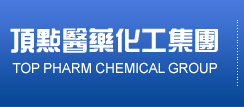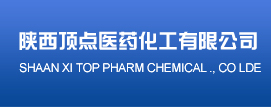
|
1.Propylene Glycol General Description
|
|
Propylene Glycol USP/EP ( PG USP/EP), referring to the United States and European Pharmacopeia,
is a high-purity grade of monopropylene glycol for use in pharmaceutical, food, cosmetic, personal care,
flavor and fragrance, plus a variety of other applications. The clear, colorless, practically odorless,
slightly viscous, water-soluble and hygroscopic liquid with low vapor pressure is produced and handled in compliance with current
Good Manufacturing Practice guidelines. PG USP/EP is tested for compliance with the current USP, EP,
and Japanese Pharmacopeia (JP) specifications plus the Food Chemical Codex (FCC);
it also complies with the Brazilian Pharmacopeia, and other pharmaceutical, cosmetic and food regulations in the global markets where it is sold.
It is listed by the Cosmetic,
Toiletry and Fragrance Association as an approved ingredient in cosmetics and its use is reviewed by the Cosmetic Ingredient Review (CIR).
|
|
2.Properties of Propylene Glycol USP/EP

|
|
|
|
3.Applications
|
|
Propylene Glycol USP/EP is a widely used ingredient in pharmaceutical, food, cosmetic, personal care,
flavors and animal feed applications; an overview of typical uses of PG USP/EP is given below.
It must be emphasized that it is the user’s responsibility to consult area and country-specific regulations for details of approved use.
1) Pharmaceuticals - Solvent for active ingredients in oral, topical and injection drug products (excipient).
2) Cosmetics & Personal Care - Solvent, coupling agent, carrier, emulsion stabiliser, softening agent,
viscosity modifier and humectant in many types of cosmetics and personal care products such as skincare,
suncare, shampoo, bath/shower products, toothpastes, mouthwashes, shaving products and baby care products.
3) Flavors & Fragrances - Solvent and extraction solvent of flavors and fragrances for applications in food, beverages, perfumes and cosmetics.
4) Food - Various applications as a direct food additive (E 1520) such as a carrier or carrier solvent for colors, emulsifiers,
antioxidants and enzymes (in Europe with maximum 1 g/kg in human foodstuffs), and humectant and stabilizer in fruits,
vegetables and bakery goods (except in Europe). PG USP/EP is also applied in indirect contact food applications, such as a low temperature heat-transfer fluid in the brewing, dairy and ice cream industries and for food storage facilities, an equipment cleaner fluid or a solvent for printing inks.
5) Petfoods & Animal Feed - Humectant, emulsifier, preservative, solvent for additives (in Europe with different maximum contents for specific species),
energy source and aid for prevention of ketosis (acetonemia) in dairy cattle.
|
|
4.Formulation Advantages
|
Forty-five percent of propylene glycol produced is used as chemical feedstock for the production of unsaturated
polyester resins. In this regard, propylene glycol reacts with a mixture of unsaturated maleic anhydride and isophthalic acid to give a copolymer.
This partially unsaturated polymer undergoes further crosslinking to yield thermoset plastics. Related to this application, propylene glycol reacts
with propylene oxide to give oligomers and polymers that are used to produce polyurethanes.
Propylene glycol is used as a humectant (E1520), solvent, and preservative in food and for tobacco products. It is also one of the major ingredients (80-92%),
along with vegetable glycerin, of the "e-liquid" and cartridges used in
electronic cigarettes (as well as liquid nicotine),where it is vaporized in the atomizer.Propylene glycol is
also used in various edible items such as coffee-based drinks, liquid sweeteners, ice cream, whipped dairy products and soda.Vaporizers used for delivery
of pharmaceuticals or personal care products often include propylene glycol among the ingredients.Propylene glycol is used as a solvent in many pharmaceuticals,
including oral, injectable and topical formulations, such as for diazepam and lorazepam which are insoluble in water.Like ethylene glycol, propylene glycol is able
to lower the freezing point of water, and so it is used as aircraft de-icing fluid.Water-propylene glycol mixtures dyed pink to indicate the mixture is relatively
nontoxic are sold under the
name of RV or marine antifreeze. Propylene glycol is frequently used as a substitute for ethylene glycol in low
toxicity, environmentally friendly automotive antifreeze. It is also used to winterize the plumbing systems in vacant
structures.The eutectic composition/temperature is 60:40 propylene glycol:water/-60 °C.The −50 °F/−45 °C commercial product is, however, water rich;
a typical formulation is 40:60.Propylene glycol is used in veterinary medicine as an oral treatment for hyperketonaemia in ruminants. Glucose, which can be
used in non-ruminants for this purpose, is not effective due to its consumption by the resident microbes of the rumen. Propylene glycol is partially
metabolized in the rumen to propionate which can be used as an energy source. The remainder is absorbed into the bloodstream and used by the liver for gluconeogenesis
|







